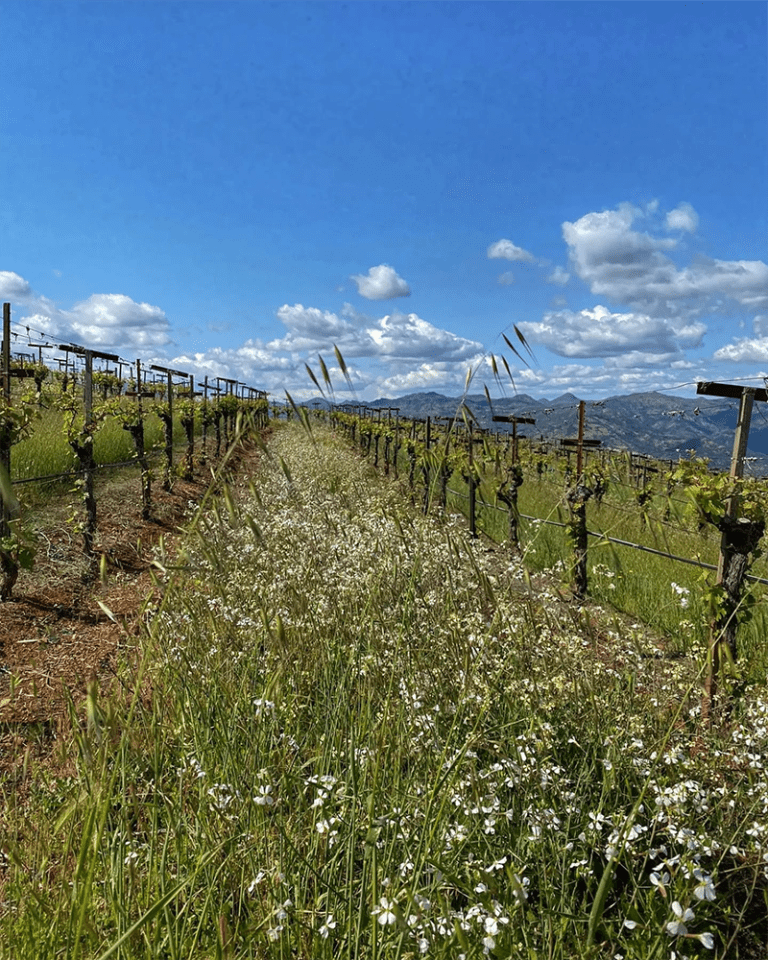
Nestled high up in the Spring Mountain District of California’s northern Napa Valley, Smith-Madrone Vineyards is unique in many ways when it comes to growing grapes and making wine.
There aren’t many wineries in the state that sit at around 2,000 feet of elevation, and certainly less that are dry farmed like Smith-Madrone. Winemaker Stu Smith, who studied viticulture and enology at UC Davis and founded the vertically integrated operation with brother Charles, considers winegrapes grown in the mountains to have character, flavor and interest, qualities that convinced him to plant in Smith-Madrone’s location. The winery’s name comes from Smith’s last name combined with the name of the predominant tree on the ranch, the Madrone, an evergreen with a red-brown trunk and branches. The operation is dry farmed and since 2017 has received little to no irrigation.
Today’s winegrape industry sees much of its product grown in the Valley, but before this practice took off, Smith said grapes were mostly grown in mountainous regions and takes pride in the location he’s been fortunate to produce in. He also acknowledged major differences in growing on a mountain vs. in a valley, including the ability to use certain equipment, water availability, permitting and surrounding wildlife among other challenges.
Smith-Madrone currently produces wine grown from grapes of Chardonnay, Riesling, Cabernet Sauvignon, Cabernet Franc, Merlot and Petite Verdot varieties.
Smith sat down with Grape and Wine to share his experiences at Smith-Madrone from 1971 to present day.
Vineyard Inception
The history of the property goes back to 1880, when George Cook planted a fair number of olive trees and cleared the forest to plant a vineyard. He then went to San Francisco and applied for the Homestead Act and was granted the property.
That vineyard was abandoned around that time, Smith said, as were most of the vineyards in the mountains, as a result of grape phylloxera, a root-feeding insect.
Smith visited the property when it had regrown into a forest and closed on it in 1971. In June of the same year, he acquired a logging permit to reclaim the vineyard from the forest and start planting.
“We had to clear the vineyard, we had to pick up all the rocks and the roots,” Smith said. “Just smoothed it out, we just picked up, picked up, picked up.”
In 1972, planting started. “We planted five acres each of Cabernet Sauvignon, Pinot Noir, Chardonnay and Riesling,” he said, although the vineyard’s current acreage no longer consists of Pinot Noir as it was phased out and grafted to Chardonnay in the 1980s.
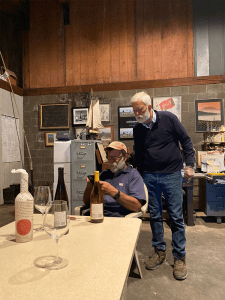
A Unique Approach to Grapes and Wine
Grapes
Vines are planted in Smith-Madrone’s vineyards on slopes with varying sun exposure depending on variety. Smith noted this orientation heavily contributes to wine quality as different varieties grow best with more or less sun exposure.
“The Chardonnay, which was Pinot Noir at the time, was planted out in front of the winery, and it went around a slope,” he said. “It was a northeast-facing slope, and it would get the least amount of direct sunlight because it would be a fairly obtuse angle for the sun. I decided to plant the Pinot Noir there because Pinot Noir needs less sun than anything else.
“Just across an avenue was an area that was facing more east,” Smith continued. “I put the Riesling there because it needed more sunlight than Pinot Noir.”
The vineyard also has a flatter portion with good sun exposure to the southeast where Smith planted the Cabernet Sauvignon.
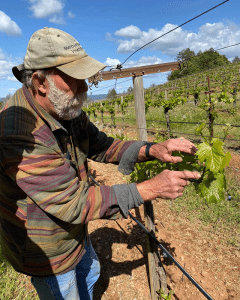
The original vineyard was hand-watered in its first year and dry farmed in subsequent years, and any new plantings have followed suit with this strategy. Dry farming as a technique has been discussed within the ag industry due to recent severe drought years in California and certain crops being tolerable to it, but the practice is still infrequently used.
Drip irrigation wasn’t common practice either when Smith initially planted, so the intention from the beginning was to dry farm, and for the most part, the vineyard has stuck to it. Drip was installed in the vineyard later but ripped out in the mid-1980s. However, due to drought concerns, any new planting in the vineyard today, Smith said, has drip installed.
“When I say dry farming, we’re not 100% anal about this,” Smith said. “Unlike back in the mid-80s with the drought, we didn’t and aren’t going to tear out the drip irrigation this time around because we just don’t know what climate change is going to bring us.
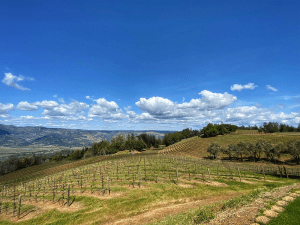
“We don’t have a lot of water, and we have to be very careful about what we do have, but a number of our blocks haven’t had water [applied] in many years.”
As with the orientation of the vineyard and its varying sun exposure, Smith believes this water strategy contributes to grape and wine quality, noting the vines go from a vegetative cycle to a ripening cycle in a more natural fashion. “The vines understand what’s going on,” he said.
It should be noted that these methods produce a smaller crop all around with a different fruit set, but that is exactly what Smith is striving for. “We don’t want big, fat, juicy, watery [grapes],” he said. “We want small berries that struggle to exist and have lots of concentrated flavors.”
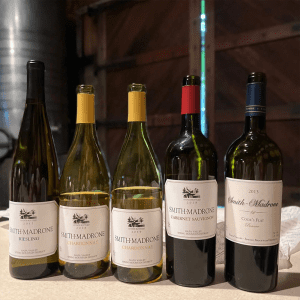
Wine
Smith-Madrone follows what Smith called a “Eurocentric” approach to winemaking, which believes in good acidity, balanced complexity, finesse, elegance and flavor layering. By definition, if any one of these pillars is more dominant than another in the final product, the wine is considered “singular.”
“What we want is all kinds of interesting flavors that balance one another and create a wine that is hedonistic,” Smith said, stressing the goal is not to make a Pepsi or a Coca-Cola but rather an end product that is more refined.
In terms of why Smith-Madrone produces their current selection, which includes Chardonnay, Riesling, Cabernet Sauvignon, Cabernet Franc, Merlot and Petite Verdot, Smith said it is mostly a matter of preference and the ways in which the winery has been able to advance its wine composition over the years.
Smith takes pride in the experience Smith-Madrone offers to visitors, who can visit with him and Charles directly during tours. The two brothers share decades of combined viticulture and enology experience.
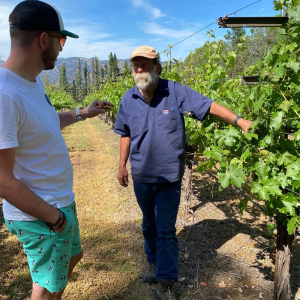
“You’re having a tour and tasting with a person who’s been doing this for decades and can answer almost any question out there that someone has,” Smith said, “and that is something you cannot get at most larger wineries. Any questions you want to ask, we will stay with the group or the person until they’re done asking questions and we will give the very best straight scientific answer that we know.”
The bulk of the winery is nestled against an alley of olive trees and overlooks most of the Chardonnay vineyard and the floor of the Napa Valley. “The property is beautiful,” Smith said.







